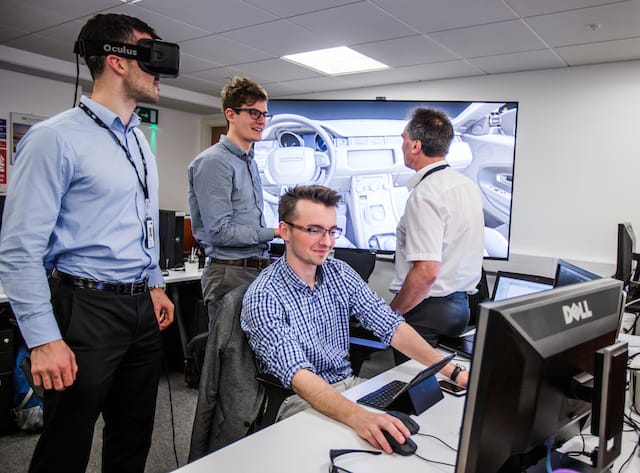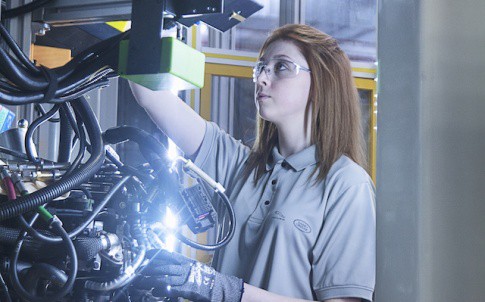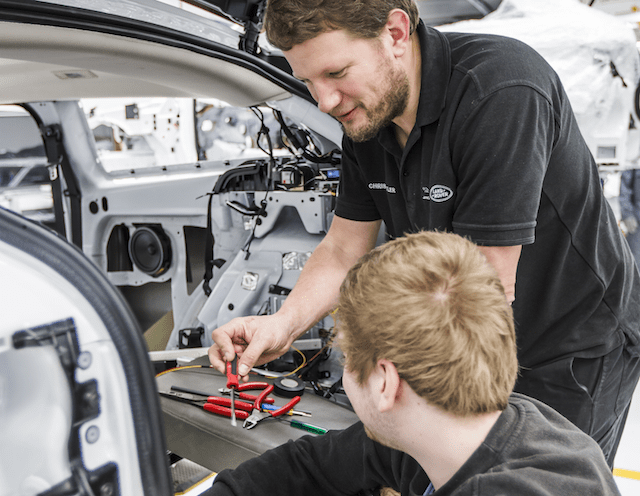In the last four years the manufacturer of premium luxury vehicles has hired 2,000 young people onto its graduate and apprentice programmes and this year has seen a record number of undergraduates join its 2015 work placement programme.
Over 6,000 applicants applied online to the scheme, with 230 being told that they had successfully navigated the selection process to land a role that could eventually see them take a step up into the company’s Graduate Programme.
Two-thirds of this year’s intake will join the scheme for 12 weeks, whilst the remaining third will embark on a full year with the business. Rob Gill, Jaguar Land Rover’s Graduate and Undergraduate Recruitment Manager, took a call from The Student Engineer to explain how the application process works.

SE: JLR encourages – and indeed expects - high standards from its employees based around 8 high performance behaviours including business acumen, team working, efficient delivery of products or services, and being able to form effective relationships. How do you assess these competencies?
RG: In the first stage of a Situational Judgement Test (SJT) you’re presented with various scenarios that test some of those competencies. Based on how people answer, that essentially maps them to our business behaviours that we’re assessing against.
Those that do okay get invited to online tests, so that’s the usual verbal, numerical, diagrammatical reasoning tests made up of multiple choice questions.
People that don’t meet our minimum benchmark at that stage are told they’re unsuccessful and that leaves us with a pool of people that we could potentially invite to Assessment Centre. It’s not ‘first come, first served’ or this uni over that uni or predicted grades or anything like that.
We’ll basically use their SJT score, online test scores and we’ll also use their UCAS points, so we capture USAS points as part of the application process but not in a way where we’ll then screen people out just because they’ve not met a set minimum number. We do [however] use those three factors…to rank the pool of people that could be invited to Assessment Centre for that area [of the business] that they’ve applied for.
Essentially that creates a strength ranking within the pool and then we invite people in that order to an Assessment event. If they attend an event they are either successful or unsuccessful, with unsuccessful candidates offered feedback.

We’ll continue to run assessment events up until we’ve filled all our roles. So although 6,000 were whittled down to 230 it doesn’t mean the balance all failed at one of those earlier stages.
SE: What can prospective engineering candidates do to make themselves stand out?
We’re not expecting our undergraduate students to come to us having done placements in engineering because that’s what we’re providing.
The real key thing – and you can only really demonstrate this at an assessment centre in our process because that’s the face-to-face stage – is that desire, motivation, commitment, passion and awareness and consciousness about why you want to do engineering, what you’re going to get from the placement, and why you think it’s right for you.
SE: How important is the placement scheme in relation to your graduate programme?
RG: We see our undergraduate schemes as feeders for our graduate scheme and that’s why we do them. We haven’t got a set target that says X% are going to be ex-placement students versus a certain number off the milk round, the external process.
However, as the number of undergrads has grown over the years I guess the greater proportion of our graduate roles are going to be filled by those that did placement with us. We would hope to maintain that.

2015 work placement programme in numbers
140 students to work within product development
40 students to work in manufacturing
50 students will be engaged in the commercial sectors, including purchasing, HR and IT
£15,600pa paid to placement students. This is paid on a pro rata basis to those doing a 3-month stint.
Did you know?
63 of this year’s Graduate intake took part in the placement programme
For the latest opportunities at Jaguar Land Rover visit this address: http://www.jaguarlandrovercareers.com/search-apply/
Discover the six key steps to getting a graduate job in engineering




Nanogenerator consumes CO2 to generate electricity
Nice to see my my views being backed up by no less a figure than Sabine Hossenfelder https://youtu.be/QoJzs4fA4fo